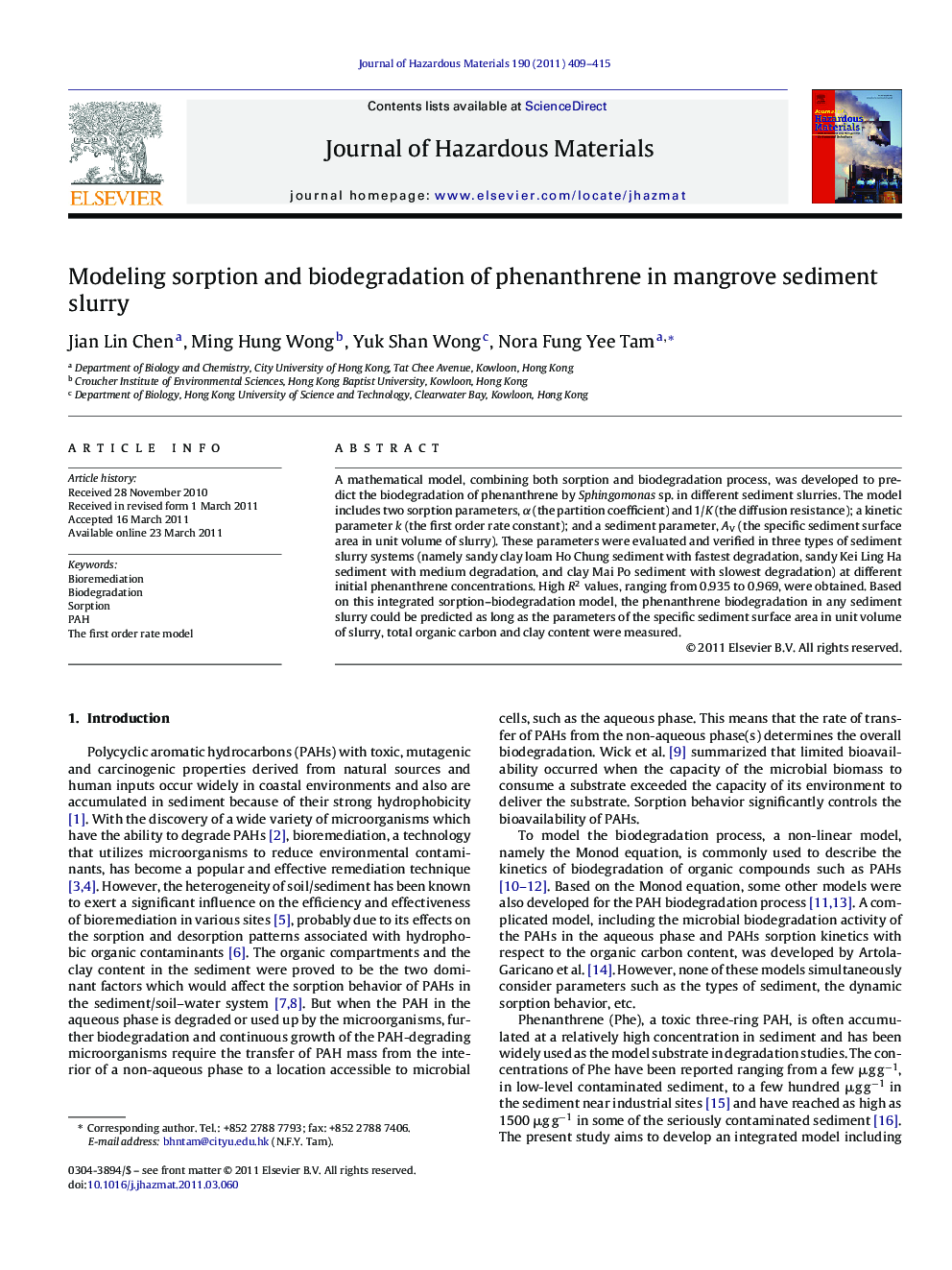| Article ID | Journal | Published Year | Pages | File Type |
|---|---|---|---|---|
| 578878 | Journal of Hazardous Materials | 2011 | 7 Pages |
Abstract
A mathematical model, combining both sorption and biodegradation process, was developed to predict the biodegradation of phenanthrene by Sphingomonas sp. in different sediment slurries. The model includes two sorption parameters, α (the partition coefficient) and 1/K (the diffusion resistance); a kinetic parameter k (the first order rate constant); and a sediment parameter, AV (the specific sediment surface area in unit volume of slurry). These parameters were evaluated and verified in three types of sediment slurry systems (namely sandy clay loam Ho Chung sediment with fastest degradation, sandy Kei Ling Ha sediment with medium degradation, and clay Mai Po sediment with slowest degradation) at different initial phenanthrene concentrations. High R2 values, ranging from 0.935 to 0.969, were obtained. Based on this integrated sorption-biodegradation model, the phenanthrene biodegradation in any sediment slurry could be predicted as long as the parameters of the specific sediment surface area in unit volume of slurry, total organic carbon and clay content were measured.
Related Topics
Physical Sciences and Engineering
Chemical Engineering
Chemical Health and Safety
Authors
Jian Lin Chen, Ming Hung Wong, Yuk Shan Wong, Nora Fung Yee Tam,
